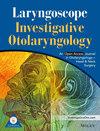Polysomnographic features of hypoglossal nerve stimulation efficacy: Looking deeper than the apnea-hypopnea index
Abstract
Objectives
Hypoglossal nerve stimulation (HGNS) is a promising surgical option for patients with obstructive sleep apnea (OSA) who are intolerant of continuous positive airway pressure therapy (CPAP). Efficacy studies for HGNS stimulation largely focus on the apnea–hypopnea index and/or oxygen desaturation index. This study's objective was to show the physiological effects of HGNS stimulation on upper airway patency, airflow, and treatment effect during polysomnography (PSG) testing.
Methods
PSG tracings from patients implanted with an Inspire© HGNS device were reviewed for this study. Nasal pressure was utilized as a surrogate for respiratory flow and chin electromyography was used to detect HGNS stimulation, allowing for breath-to-breath analysis. Per our sleep laboratory protocol, the HGNS device was turned on and off at different periods of the night. Respiratory tracings during these periods were visually analyzed.
Results
Analysis of on–off periods of HGNS therapy during PSG allows for a concise assessment of HGNS efficacy. The presence of inspiratory flow limitation and subsequent apneas or hypopneas upon turning off HGNS stimulation with restoration of stable, unobstructed breathing upon resuming HGNS stimulation indicates a positive treatment effect related to HGNS therapy. Despite the respiratory-sensing capacity of the Inspire HGNS device, desynchrony of stimulation and inspiration is observed. Desynchrony yields partially captured inspiratory cycles, allowing for assessment of HGNS effect on an individual breath.
Conclusion
Night-to-night and intranight variability in OSA severity makes assessing the effect of HGNS complex. Strategic testing protocols during postoperative PSG can provide critical insight into the effect of this therapy on upper airway obstruction during sleep. On–off periods of stimulation provide a concise assessment of the effect of HGNS on preventing upper airway collapse and help to account for night-to-night and intranight variability. Respiratory desynchrony associated with HGNS therapy exists. Observing partially-stimulated inspiratory cycles allow for assessment of HGNS's effect on a single breath.
Level of Evidence
4.


 求助内容:
求助内容: 应助结果提醒方式:
应助结果提醒方式:


